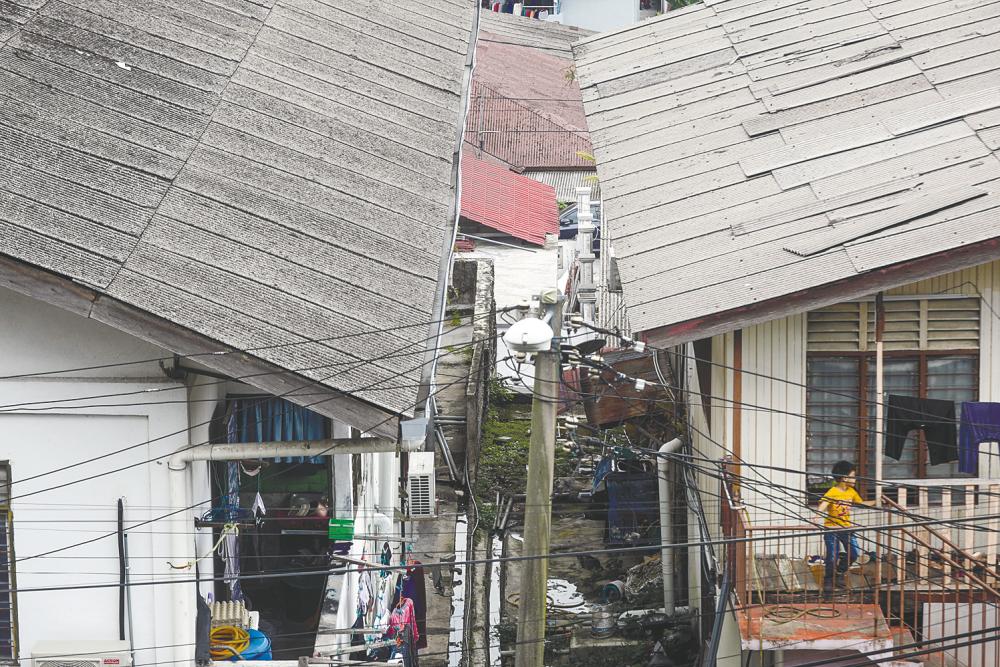PETALING JAYA: Even two decades after Malaysia banned asbestos in government buildings, the hazardous material remains a silent threat.
Despite its well-documented carcinogenic risks, asbestos continues to be widely used in private construction and industrial sectors.
Experts warn that without urgent, coordinated action, Malaysians – especially those in vulnerable communities – will continue to face life-threatening health consequences.
Even low-level or brief exposure to asbestos can cause severe, irreversible lung damage.
Negeri Sembilan-based Safe Asbestos Sdn Bhd managing director Hisham Yahaya said asbestos is still commonly found in older homes, particularly in ceiling boards and roofing sheets, and remains in use across various industries.
“It is still used in panel boards, insulation and gaskets. The problem is people often do not realise they’re being exposed, and even when they do, the cost of proper removal deters them.
“Many simply break it apart and dispose it improperly, which is extremely dangerous.”
He added that although safer alternatives such as metal roofing, cellulose fibre boards and modern insulation materials are available, adoption has been slow.
“Industries and small contractors often choose the cheapest option. Without financial support or strict enforcement, they won’t change.”
International Islamic University Malaysia Department of Community Medicine associate professor Dr Muhammad Zubir Yusof said part of the issue lies in regulatory gaps and inconsistent enforcement.
“Malaysia banned crocidolite asbestos, a particularly dangerous form known for its fine, easily inhaled fibres, in 1999.
“The ban was extended to all government building projects by 2005. But this restriction doesn’t apply to the private sector.
“Chrysotile, the most commonly used type, is still allowed in products such as brake pads.”
Also an expert in environmental and occupational health and safety research, he added that the continued use of asbestos – particularly crocidolite – is largely driven by its low cost and durability compared with alternatives such as cellulose fibre cement sheets.
“While crocidolite is especially hazardous, chrysotile also poses significant risks.
“There’s no such thing as safe asbestos exposure. Both types can cause long-term health damage.”
He called for an immediate nationwide ban on asbestos, but stressed it must be accompanied by effective enforcement.
“We need a trained, certified workforce for asbestos removal, financial incentives to support the use of safer materials and stronger penalties for illegal use or mishandling.”
Beyond regulation, he emphasised the need for public education.
“People in rural areas and those working in construction or manufacturing often don’t fully understand the risks.
“A national awareness campaign, culturally sensitive and tailored to vulnerable groups, is essential.”
From a clinical standpoint, Universiti Kebangsaan Malaysia Specialist Centre respiratory physician Assoc Prof Dr Ng Boon Hau echoed these concerns.
“Inhaling asbestos fibres, even for a short time, can result in permanent lung damage.
“These microscopic fibres get lodged deep in the lungs and are nearly impossible for the body to remove.”
He explained that long-term consequences include lung scarring, asbestosis and cancer.
“Mesothelioma, a cancer of the lung lining, and lung cancer are directly linked to asbestos exposure.
“These conditions can take decades to develop, making early detection and treatment extremely difficult.”
Ng also supported the call for a complete asbestos ban, alongside stronger oversight of industries.
“There is no safe level of exposure. Employers must take their responsibilities seriously.
“They are legally and morally obligated to protect workers from harmful substances and that includes complying with guidelines from the Department of Occupational Safety and Health.”
On Jan 11, Natural Resources and Environmental Sustainability Minister Nik Nazmi Nik Ahmad announced that the government is considering a full asbestos ban.
He said the Department of Environment is studying the health and environmental impacts of industrial asbestos use and reviewing existing legislation to identify any gaps.
However, there have been no further updates on the proposal.









